Evaporative Emission Hoses/Pipes Replacement - Engine/Chassis Pickup
Removal Procedure
Important: Clean the fuel/EVAP pipe connections and surrounding areas before disconnecting the pipes in order to avoid possible fuel/EVAP system contamination.
- Relieve the fuel system pressure. Refer to Fuel Pressure Relief .
- Disconnect the fuel feed and return pipes (1) at the fuel rail. Refer to Metal Collar Quick Connect Fitting Service .
- Disconnect the evaporative emission (EVAP) canister purge tube (3).
- Cap the fuel rail and EVAP pipes.
- Raise and suitably support the vehicle. Refer to Lifting and Jacking the Vehicle in General Information.
- Remove the fuel hose/pipe bracket nut (2).
- Remove the fuel hose/pipe bracket from the bellhousing stud.
- Remove the fuel hose/pipe clip from the bracket on the transmission.
- If equipped with 4-wheel drive (4WD), remove the fuel hose/pipe clip from the bracket on the transfer case.
- Remove the EVAP canister. Refer to Evaporative Emission Canister Replacement .
- Disconnect the fuel feed and return pipes at the fuel tank. Refer to Plastic Collar Quick Connect Fitting Service .
- Cap the fuel pipes at the fuel tank.
- If vehicle is a regular cab, remove the fuel feed, EVAP, and return pipe assembly nuts.
- If vehicle is a extended cab, remove the fuel feed, EVAP, and return pipe assembly nuts.
- If vehicle is a crew cab, remove the fuel feed, EVAP, and return pipe assembly nuts.
- Remove the fuel feed, EVAP, and return pipe assembly.

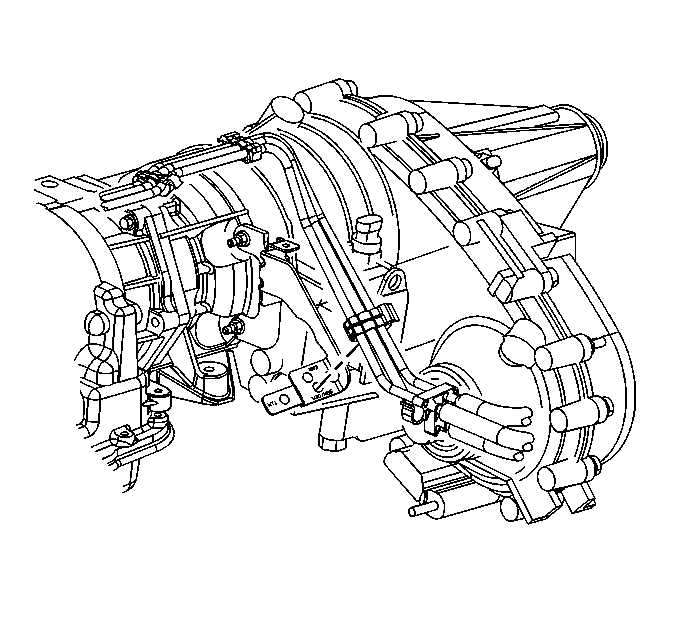
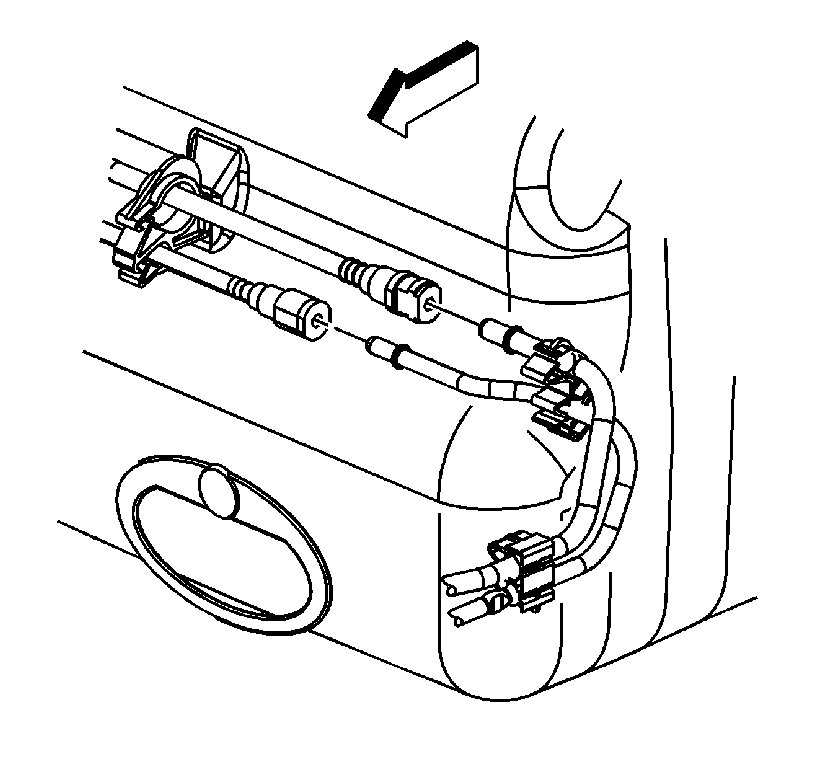
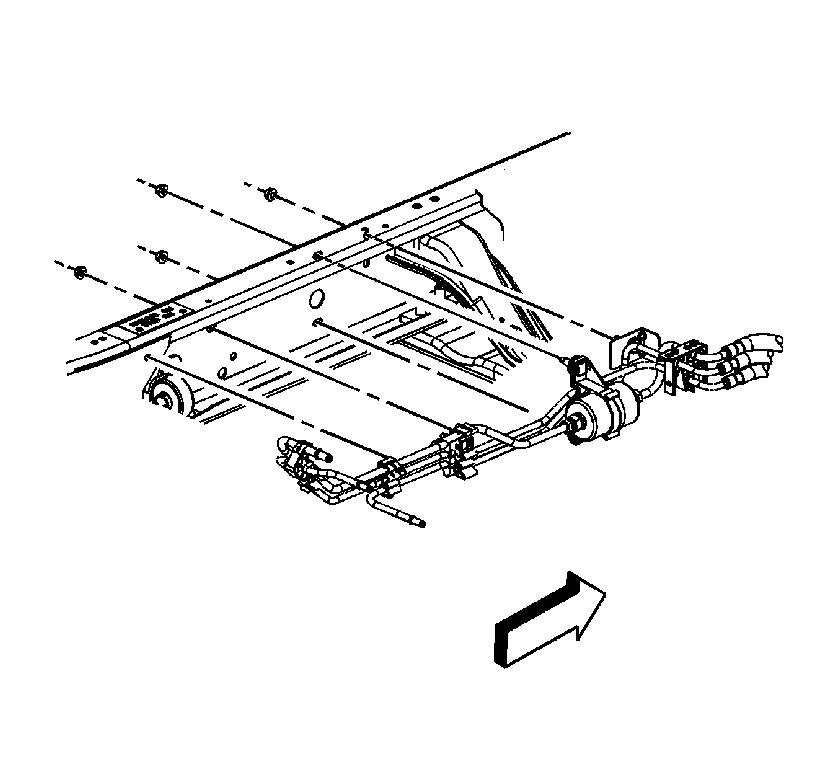

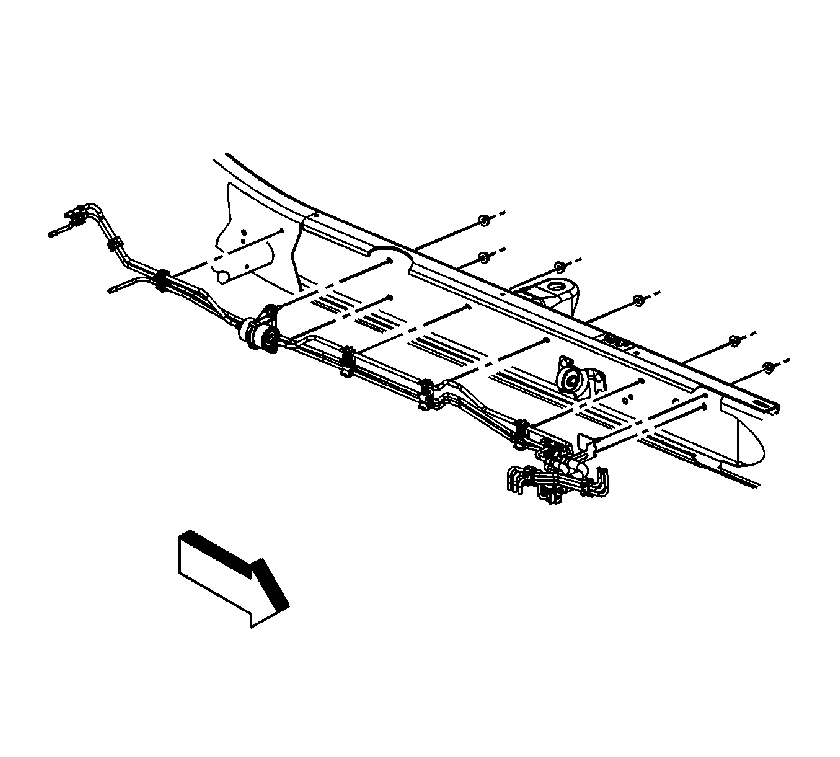
Installation Procedure
- Install the fuel feed, EVAP, and return pipe assembly.
- If vehicle is a crew cab, install the fuel feed, EVAP, and return pipe assembly nuts.
- If vehicle is a extended cab, install the fuel feed, EVAP, and return pipe assembly nuts.
- If vehicle is a regular cab, install the fuel feed, EVAP, and return pipe assembly nuts.
- Remove the caps from the fuel pipes at the fuel tank.
- Connect the fuel feed and return pipes at the fuel tank. Refer to Plastic Collar Quick Connect Fitting Service .
- Install the EVAP canister. Refer to Evaporative Emission Canister Replacement .
- If equipped with 4WD, install the fuel hose/pipe clip to the bracket on the transfer case.
- Install the fuel hose/pipe clip to the bracket on the transmission.
- Install the fuel hose/pipe bracket to the bellhousing stud.
- Install the fuel hose/pipe bracket nut (2).
- Lower the vehicle.
- Remove the caps from the fuel rail and EVAP pipes.
- Connect the EVAP canister purge tube (3).
- Connect the fuel feed and return pipes (1) at the fuel rail. Refer to Metal Collar Quick Connect Fitting Service .
- Install the fuel fill cap.
- Connect the negative battery cable. Refer to Battery Negative Cable Disconnection and Connection in Engine Electrical.
- Use the following procedure in order to inspect for leaks:
Notice: Refer to Fastener Notice in the Preface section.

Tighten
Tighten the nuts to 12 N·m (106 lb in).

Tighten
Tighten the nuts to 12 N·m (106 lb in).

Tighten
Tighten the nuts to 12 N·m (106 lb in).



Tighten
Tighten the nut to 10 N·m (89 lb in).
| • | Turn the ignition ON, with the engine OFF, for 2 seconds. |
| • | Turn the ignition OFF for 10 seconds. |
| • | Turn the ignition ON, with the engine OFF. |
| • | Inspect for fuel leaks. |
Evaporative Emission Hoses/Pipes Replacement - Engine/Chassis Cab/Chassis
Removal Procedure
Important: Clean all fuel and evaporative emission (EVAP) pipe connections and surrounding areas before disconnecting the pipes in order to avoid possible fuel/EVAP system contamination.
- Relieve the fuel system pressure. Refer to Fuel Pressure Relief .
- Disconnect the fuel feed and return pipes (1) from the fuel rail. Refer to Metal Collar Quick Connect Fitting Service .
- Disconnect the EVAP canister purge tube (3).
- Cap the fuel and EVAP pipes.
- Raise and suitably support the vehicle. Refer to Lifting and Jacking the Vehicle in General Information.
- Remove the fuel pipe bracket nut (2).
- Remove the fuel pipe bracket from the bellhousing stud.
- Remove the fuel hose/pipe clip from the bracket on the transmission.
- If equipped with 4-wheel drive (4WD), remove the fuel hose/pipe clip from the bracket on the transfer case.
- Remove the EVAP canister. Refer to Evaporative Emission Canister Replacement .
- Disconnect the fuel feed and return pipes from the fuel tank. Refer to Plastic Collar Quick Connect Fitting Service .
- Cap the fuel pipes at the fuel tank.
- If vehicle is a regular cab, remove the fuel feed, EVAP, and return pipe assembly nuts.
- If vehicle is a extended cab, remove the fuel feed, EVAP, and return pipe assembly nuts.
- Remove the fuel feed, EVAP, and return pipe assembly.



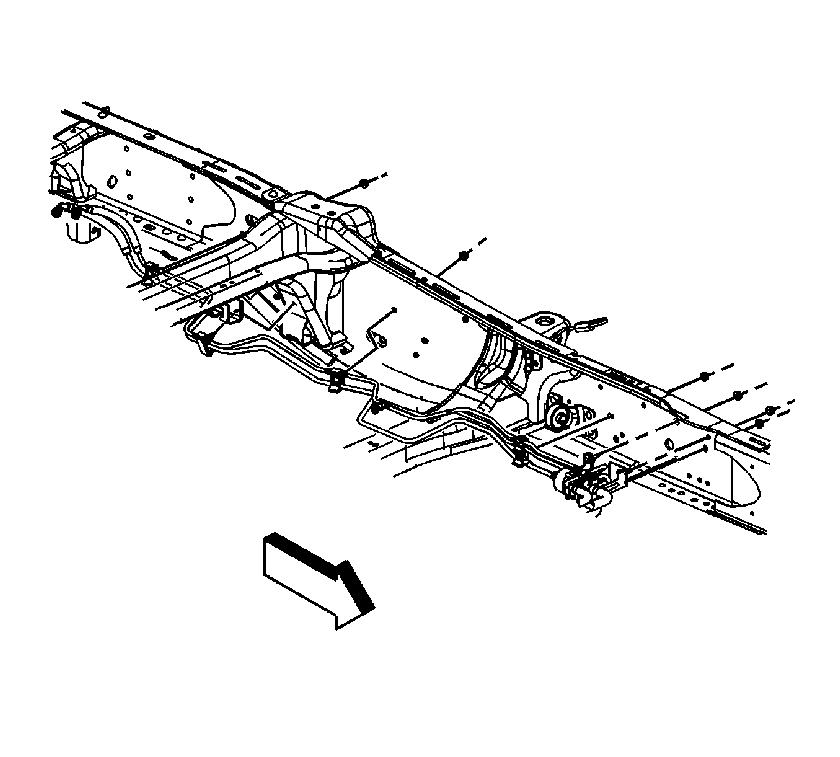
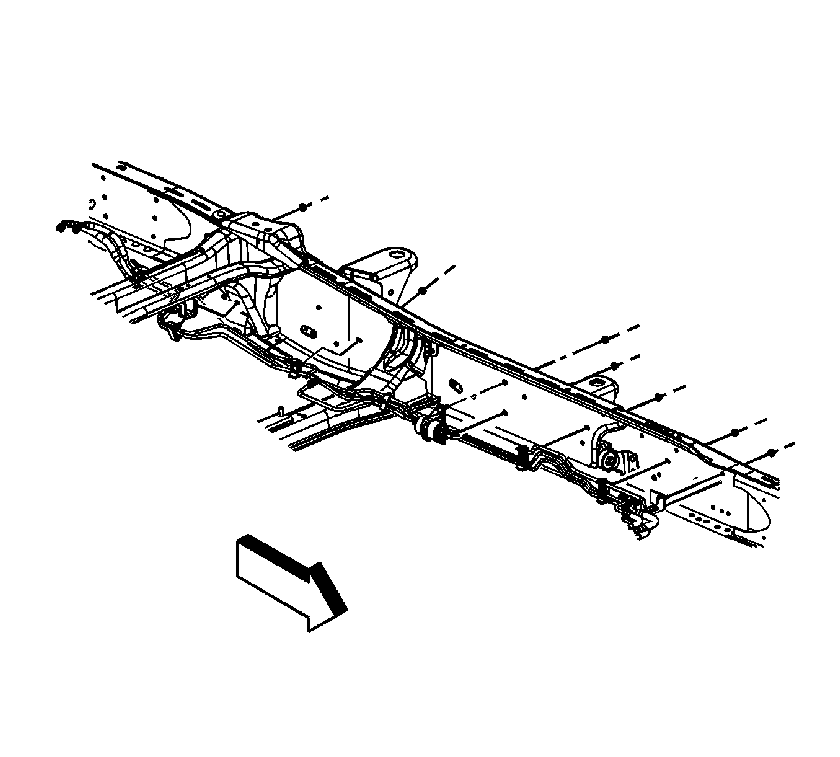
Installation Procedure
- Install the fuel feed, EVAP, and return pipe assembly.
- If vehicle is a extended cab, install the fuel feed, EVAP, and return pipe assembly nuts.
- If vehicle is a regular cab, install the fuel feed, EVAP, and return pipe assembly nuts.
- Remove the caps from the fuel pipes at the fuel tank.
- Connect the fuel feed and return pipes to the fuel tank. Refer to Plastic Collar Quick Connect Fitting Service .
- Install the EVAP canister. Refer to Evaporative Emission Canister Replacement .
- If equipped with 4WD, install the fuel hose/pipe clip to the bracket on the transfer case.
- Install the fuel hose/pipe clip to the bracket on the transmission.
- Install the fuel pipe bracket to the bellhousing stud.
- Install the fuel pipe bracket nut (2).
- Lower the vehicle.
- Remove the caps from the fuel and EVAP pipes.
- Connect the EVAP canister purge tube (3).
- Connect the fuel feed and return pipes (1) to the fuel rail. Refer to Metal Collar Quick Connect Fitting Service .
- Install the fuel fill cap.
- Connect the negative battery cable. Refer to Battery Negative Cable Disconnection and Connection in Engine Electrical.
- Use the following procedure in order to inspect for leaks:
Notice: Refer to Fastener Notice in the Preface section.

Tighten
Tighten the nuts to 12 N·m (106 lb in).

Tighten
Tighten the nuts to 12 N·m (106 lb in).


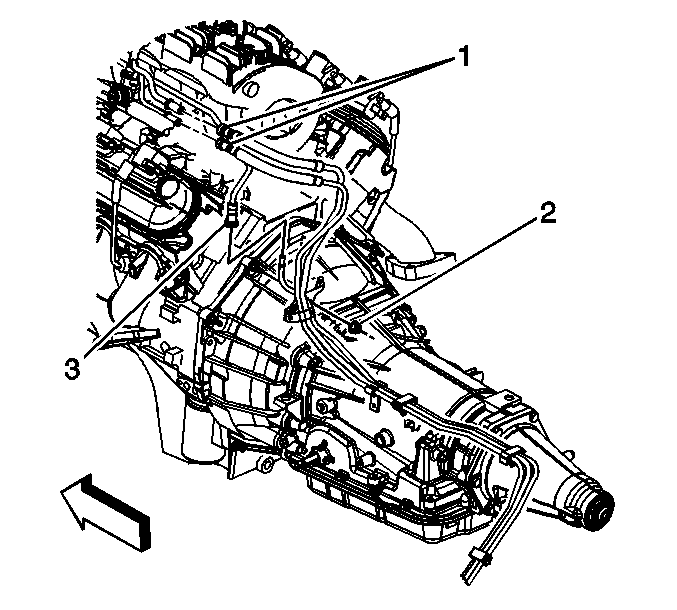
Tighten
Tighten the nuts to 10 N·m (89 lb in).
| • | Turn the ignition ON, with the engine OFF, for 2 seconds. |
| • | Turn the ignition OFF for 10 seconds. |
| • | Turn the ignition ON, with the engine OFF. |
| • | Inspect for fuel leaks. |
